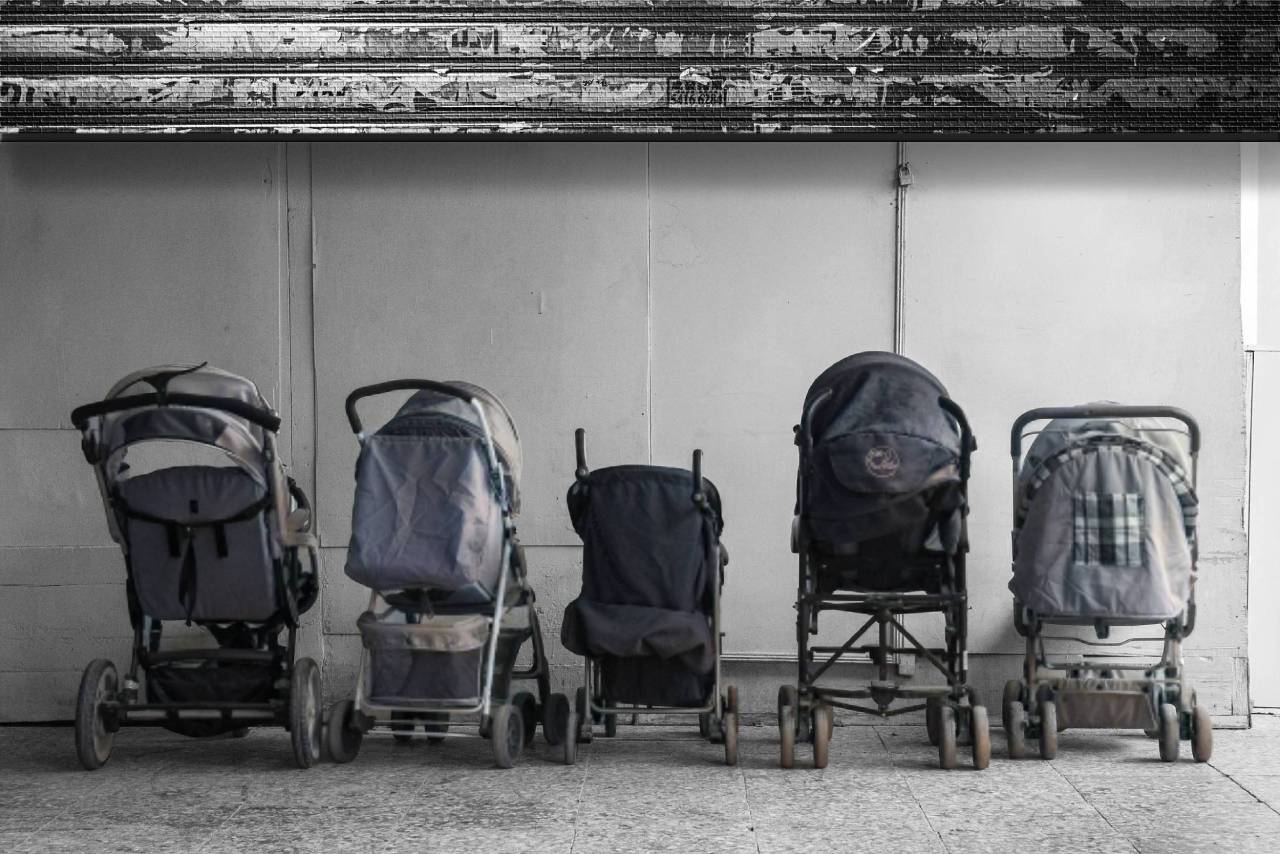

Articles
How To Store Strollers In The Garage
Modified: May 6, 2024
Looking for articles on how to store strollers in your garage? Check out our helpful tips and tricks to keep your strollers organized and protected.
(Many of the links in this article redirect to a specific reviewed product. Your purchase of these products through affiliate links helps to generate commission for Storables.com, at no extra cost. Learn more)
Introduction
Strollers are a must-have for parents, providing a convenient way to transport their little ones while running errands or enjoying outdoor activities. However, when not in use, strollers can take up valuable space in the home. That’s where the garage comes in handy as the perfect storage solution for strollers.
Storing strollers in the garage not only frees up space inside the house but also helps to keep the strollers protected from the elements. With proper organization and storage techniques, you can ensure that your strollers are easily accessible whenever you need them without cluttering your living areas.
In this article, we will explore the benefits of storing strollers in the garage and provide a comprehensive step-by-step guide on how to store strollers in a way that keeps them safe, organized, and ready for use.
Key Takeaways:
- Efficiently store and organize strollers in the garage to free up space, protect from damage, and ensure easy accessibility. Consider factors like garage conditions, childproofing, and utilizing wall hooks or storage racks for optimal storage.
- Prioritize cleaning and preparing strollers, securing loose parts, and maintaining a safe storage environment in the garage. Utilize vertical space, label items, and rotate strollers for efficient and organized storage.
Read also: 9 Best Stroller Fan for 2024
Benefits of Storing Strollers in the Garage
Storing your strollers in the garage offers several advantages:
- Space Saving: By keeping your strollers in the garage, you can free up valuable space in your home, especially if you have limited storage options indoors.
- Protection from the Elements: The garage provides a sheltered environment that helps protect your strollers from harsh weather conditions, such as extreme heat, rain, or snow.
- Easy Accessibility: Storing your strollers in the garage allows for easy access whenever you need them. You won’t have to navigate through cluttered hallways or search every room to find your stroller.
- Organizational Benefits: With proper storage techniques, you can keep your garage tidy and organized, ensuring that your strollers are neatly stored and readily available whenever you need them.
Factors to Consider Before Storing Strollers in the Garage
Before you start storing your strollers in the garage, there are a few factors to consider:
- Garage Conditions: Evaluate the temperature and humidity levels in your garage. Extreme temperature fluctuations or high humidity can potentially damage the stroller’s materials or affect the functionality of the components.
- Space Availability: Assess the available space in your garage. Consider the number of strollers you need to store and whether there are any other items that may hinder storing them efficiently.
- Childproofing: If you have young children, ensure that the storage area in the garage is childproofed. Strollers should be stored safely, out of reach of curious little hands.
- Accessibility: Determine the level of accessibility you require for your strollers. Think about how frequently you use them and choose a storage solution that allows for easy retrieval without any inconvenience.
Taking these factors into account will help you make informed decisions when it comes to storing your strollers in the garage. Now let’s dive into the step-by-step guide on how to store strollers effectively.
Key Takeaways:
- Efficiently store and organize strollers in the garage to free up space, protect from damage, and ensure easy accessibility. Consider factors like garage conditions, childproofing, and utilizing wall hooks or storage racks for optimal storage.
- Prioritize cleaning and preparing strollers, securing loose parts, and maintaining a safe storage environment in the garage. Utilize vertical space, label items, and rotate strollers for efficient and organized storage.
Read also: 9 Best Stroller Fan for 2024
Benefits of Storing Strollers in the Garage
Storing your strollers in the garage offers several advantages:
- Space Saving: By keeping your strollers in the garage, you can free up valuable space in your home, especially if you have limited storage options indoors. Garages are typically spacious enough to accommodate multiple strollers without cluttering your living areas.
- Protection from the Elements: Strollers are designed to withstand everyday wear and tear, but exposure to extreme weather conditions can take a toll on their longevity. The garage provides a sheltered environment that helps protect your strollers from harsh weather conditions, such as extreme heat, rain, or snow. This protection extends the life of your strollers, saving you money in the long run.
- Easy Accessibility: Storing your strollers in the garage allows for easy access whenever you need them. You won’t have to navigate through cluttered hallways or search every room to find your stroller. With a designated spot in the garage, you can simply grab your stroller and go, saving you time and frustration.
- Organizational Benefits: Storing strollers in the garage provides an opportunity for better organization. You can create a designated storage area for your strollers, keeping them neatly stored and readily available whenever you need them. By implementing effective storage solutions, such as hooks or storage racks, you can maximize the use of vertical space and keep your garage tidy.
- Reduced Wear and Tear: Storing your strollers in the garage protects them from potential damage caused by daily usage in the house. Strollers can sometimes get in the way or become tripping hazards, leading to accidental bumps or spills. By keeping them in the garage when not in use, you minimize the risk of accidents and prolong the lifespan of your strollers.
- Additional Storage Options: Alongside your strollers, the garage can also provide storage for other baby-related items, such as car seats, high chairs, or baby carriers. Utilizing your garage as a centralized storage space for these items helps keep them organized and easily accessible.
- Privacy and Security: Storing your strollers in the garage keeps them out of sight from prying eyes, providing an added layer of privacy and security. This is particularly beneficial if you live in a neighborhood with a high risk of theft or if you have valuable, high-end strollers that you want to protect.
By considering the benefits of storing your strollers in the garage, you can make a conscious decision to utilize this space effectively and create a convenient storage solution for your strollers.
Factors to Consider Before Storing Strollers in the Garage
Before you start storing your strollers in the garage, there are a few factors to consider:
- Garage Conditions: Evaluate the temperature and humidity levels in your garage. Extreme temperature fluctuations or high humidity can potentially damage the stroller’s materials or affect the functionality of the components. It’s essential to ensure that your garage provides a stable environment to protect your strollers.
- Space Availability: Assess the available space in your garage. Consider the number of strollers you need to store and whether there are any other items that may hinder storing them efficiently. Measure the dimensions of your strollers and plan the storage area accordingly to avoid any space constraints.
- Childproofing: If you have young children, it’s crucial to ensure that the storage area in the garage is childproofed. Strollers should be stored safely, out of reach of curious little hands. Consider using locks or installing barriers to prevent children from accessing the strollers and potentially causing accidents.
- Accessibility: Determine the level of accessibility you require for your strollers. Think about how frequently you use them and choose a storage solution that allows for easy retrieval without any inconvenience. Consider the height and weight of the strollers and whether you can maneuver them easily in and out of the garage.
- Protection Measures: Evaluate the protection measures you need for your strollers. Consider using stroller covers or protective cases to shield them from dust, dirt, and potential scratches. Additionally, ensure that the storage area in the garage is free from any hazards that could potentially damage the strollers.
- Organization System: Plan a suitable organization system for your strollers in the garage. Determine whether you will hang them on hooks, utilize storage racks, or use a combination of methods. Consider your garage layout and available wall space to maximize storage efficiency and maintain a clutter-free environment.
- Maintenance and Cleaning: Storing strollers in the garage requires regular maintenance and cleaning. Ensure that you have the necessary cleaning supplies to keep your strollers in good condition. Also, plan for regular inspections to check for any signs of damage or wear and tear.
By considering these factors, you can make informed decisions in terms of selecting the right storage solution for your strollers and ensuring that they are well-protected, easily accessible, and properly maintained in the garage.
Read more: How To Store Clothes In Garage
Step-by-Step Guide to Storing Strollers in the Garage
Follow this comprehensive step-by-step guide to effectively store your strollers in the garage:
- Clean and Prepare the Stroller: Before storing your stroller, give it a thorough cleaning. Remove any dirt, debris, or food crumbs that may have accumulated. Wipe down the frame, fabric, and wheels using mild soap and water. Allow the stroller to dry completely before proceeding to the next step.
- Choose the Right Storage Location in the Garage: Assess your garage layout and available space to determine the most suitable location for your strollers. Consider utilizing wall space or designated storage areas to maximize efficiency. Ensure that the chosen location is easily accessible and provides adequate protection from potential hazards.
- Fold and Disassemble the Stroller (if applicable): If your stroller is foldable or can be disassembled, do so to save space and facilitate storage. Follow the manufacturer’s instructions to properly fold or disassemble the stroller without causing any damage.
- Secure Loose Parts and Accessories: Before storing, ensure that all loose parts and accessories are safely secured. Detachable trays, cup holders, or baskets should be removed and stored separately or securely attached to the stroller.
- Store Stroller in a Protective Cover (optional): Consider using a protective cover or stroller bag to shield your stroller from dust, dirt, and potential scratches. The cover should fit snugly and provide adequate protection without causing any strain on the stroller.
- Utilize Wall Hooks or Hanging Solutions: If space allows, hang the stroller on wall hooks or hanging solutions to keep it off the ground and save floor space. Make sure the hooks or hanging solutions are sturdy enough to support the weight of the stroller.
- Consider Using Stroller Storage Racks or Shelving Units: If you have multiple strollers or limited wall space, consider using stroller storage racks or shelving units. These storage solutions provide an organized and efficient way to store strollers. Place the strollers on the racks or shelves with enough space in between to prevent scratching or damaging adjacent strollers.
- Maintain a Safe Environment for Stroller Storage: Ensure that the storage area in the garage is clean, dry, and free from any potential hazards. Regularly inspect the area for any signs of pests or moisture buildup. Keep the strollers away from any sharp objects or chemicals that could cause damage.
Following these steps will help you store your strollers safely and efficiently in the garage. Remember to check on your strollers periodically and perform any necessary maintenance to keep them in top condition.
Clean and Prepare the Stroller
Before storing your stroller in the garage, it’s important to give it a thorough cleaning and prepare it for long-term storage. Here’s a step-by-step guide on how to clean and prepare your stroller:
- Remove any debris: Begin by removing any loose items, such as toys, blankets, or snacks, from the stroller. Clearing out the stroller will make the cleaning process easier and more effective.
- Shake off loose dirt: Take the stroller outside and give it a good shake to remove any loose dirt or debris. This will help get rid of larger particles that may have accumulated in crevices or on the fabric.
- Wipe down the frame: Use a damp cloth or sponge and a mild soap solution to clean the frame of the stroller. Pay attention to any stubborn stains or sticky spots. Be sure to clean all the nooks, corners, and joints of the frame, as these areas tend to collect dirt and grime.
- Clean the fabric: Depending on the material of your stroller’s fabric, you can either spot clean it with a damp cloth and mild soap or remove the fabric for a more thorough wash. Check the manufacturer’s instructions for specific cleaning recommendations. If machine-washing the fabric, follow the guidelines for the proper temperature and cycle.
- Scrub the wheels: The wheels of your stroller tend to accumulate dirt and debris from various surfaces. Use a brush or a toothbrush with mild soap and water to scrub the wheels, removing any dirt or grime. Pay attention to the treads to ensure they are clean and free from any blockages.
- Dry the stroller thoroughly: After cleaning, make sure to dry the stroller completely before storing it. Leave it in a well-ventilated area or use a clean towel to dry the frame and fabric. Dampness can lead to mold or mildew growth, which can damage the stroller.
- Inspect for any damage: Take the time to inspect the stroller for any signs of damage or wear and tear. Check for loose screws, broken parts, or tears in the fabric. Address any repairs or replacements before storing the stroller to ensure it’s in good working condition when you need to use it again.
Cleaning and preparing your stroller before storing it in the garage will not only keep it in good condition but also ensure that it’s ready to use when you need it next. By following these steps, you can maintain the cleanliness and functionality of your stroller, ensuring its longevity and performance.
Choose the Right Storage Location in the Garage
When storing your stroller in the garage, it’s important to choose the right storage location. Here’s a step-by-step guide to help you find the optimal spot for your stroller:
- Evaluate your garage space: Assess the available space in your garage to determine where you can store your stroller. Consider the layout, dimensions, and any existing storage systems or obstacles.
- Create a designated storage area: Designate a specific area in your garage to keep your strollers organized. Having a dedicated spot will make it easier to find and access your stroller when you need it.
- Consider the proximity to the entrance: If you often use your stroller, choose a storage location near the entrance of the garage for easy accessibility. This way, you can grab your stroller quickly when you’re heading out.
- Ensure protection from hazards: Avoid storing your stroller near any potential hazards in the garage, such as sharp tools, chemicals, or heavy objects that may fall. Keep it away from areas prone to water leaks or excessive moisture to prevent damage.
- Mind temperature and humidity: Consider the temperature and humidity levels in your garage. Extreme temperature fluctuations or high humidity can potentially damage the materials of the stroller. Choose a storage location with relatively stable temperature and humidity.
- Utilize wall space: If your garage has limited floor space, consider utilizing wall space to hang your stroller. Install sturdy hooks or hanging solutions to keep the stroller off the ground and save floor space.
- Maximize vertical storage: If you have multiple strollers or limited wall space, consider using stroller storage racks or shelving units. These systems allow you to stack and store your strollers vertically, making the most efficient use of space.
- Avoid overcrowding: Ensure that the chosen storage location provides enough space for the stroller without overcrowding. Strollers should be easily accessible and should not be squeezed between other items or have items pressing against them.
- Childproof the storage area: If you have young children, childproof the storage area in the garage to prevent them from accessing the strollers. This can be done by installing locks or barriers to restrict access.
By carefully considering these factors, you can choose the right storage location for your stroller in the garage. Remember to prioritize accessibility, protection from hazards, and efficient use of space to ensure that your stroller is safely and conveniently stored.
Consider using wall-mounted hooks or a hanging stroller organizer to store strollers in the garage. This will help save space and keep the strollers easily accessible.
Fold and Disassemble the Stroller (if applicable)
When storing your stroller in the garage, it’s important to consider whether it can be folded or disassembled. Not all strollers have this feature, but if yours does, here’s a step-by-step guide on how to fold and disassemble your stroller for efficient storage:
- Refer to the manufacturer’s instructions: Start by consulting the manufacturer’s instructions that came with your stroller. The manual will provide specific guidance on how to fold or disassemble your particular model.
- Remove any accessories: Before folding or disassembling, detach any accessories such as trays, cup holders, or storage baskets. Keep them aside or store them separately, ensuring they are in a safe place for future use.
- Folding a standard stroller: If your stroller is foldable, locate the folding mechanism. Typically, there will be levers, buttons, or latches that need to be released to initiate the folding process. Follow the instructions provided to fold the stroller, ensuring that all parts are securely locked in place before moving onto the next step.
- Disassembling a modular stroller: Modular or multi-piece strollers can be disassembled into separate components, making them more compact for storage. Check the manual for instructions on how to detach the different parts, such as the frame, seat, wheels, or canopy. Take care not to force any parts apart; follow the instructions to disassemble the stroller correctly.
- Secure any loose parts: Once the stroller is folded or disassembled, secure any loose parts. Use Velcro straps, bungee cords, or zip ties to hold the stroller components together. This will prevent any pieces from getting lost or accidentally damaged while in storage.
- Consider bagging or covering: If your folded or disassembled stroller is still exposed, consider placing it in a stroller bag or using a protective cover to shield it from dust, dirt, or accidental damage. Ensure that the bag or cover fits properly and provides sufficient protection without putting excess strain on the stroller.
- Label or organize: If you have multiple strollers or other similar items in storage, label each bag or cover to easily identify the contents. Alternatively, organize the folded or disassembled strollers in a systematic manner, grouping them together for efficient storage and retrieval.
Folding or disassembling your stroller, if applicable, can save valuable space in the garage and make storage more efficient. However, it’s important to follow the manufacturer’s instructions and handle the stroller with care to avoid any damage. By properly folding or disassembling your stroller, you can store it conveniently while ensuring its longevity and functionality for future use.
Read more: How To Store Suitcases In Garage
Secure Loose Parts and Accessories
When storing your stroller in the garage, it’s important to secure any loose parts and accessories to prevent them from getting lost or damaged. Follow these steps to ensure that everything stays organized and intact:
- Remove detachable accessories: Take a close look at your stroller and identify any detachable accessories such as trays, cup holders, or storage baskets. These accessories can easily become misplaced if not properly secured.
- Clean and inspect accessories: Before storing the accessories, give them a quick cleaning to remove any dirt or debris. Inspect them for any signs of damage or wear and tear. If necessary, address any repairs or replacements before storing them.
- Store accessories separately: It’s best to store the accessories separately, either in a designated bag or container. This will prevent them from getting tangled or lost among other items in the garage. You can also label the storage containers to easily identify which accessories belong to your stroller.
- Attach accessories to the stroller (if possible): If your stroller has designated attachment points for accessories, it’s a good idea to keep them attached to the stroller during storage. This ensures that everything stays together and reduces the risk of misplacing the accessories.
- Secure loose parts: For any loose parts that cannot be attached to the stroller, such as detachable canopies or safety bars, use a secure method to keep them in place. Velcro straps, zip ties, or rubber bands can be used to hold the parts together and prevent them from becoming separated or lost.
- Protect fragile parts: If any parts of the stroller are fragile or prone to damage, consider using padding or wrapping them with a soft cloth or bubble wrap before storing. This will provide an extra layer of protection and help prevent any potential breakage.
- Keep instruction manuals: It’s a good practice to keep the instruction manuals for your stroller and its accessories. Store them in a safe place, such as a drawer or folder, so you can easily refer to them when needed.
By securing the loose parts and accessories of your stroller, you can ensure that everything remains organized and in good condition. Storing the accessories separately, attaching them to the stroller (if possible), and labeling storage containers will help you keep track of all the necessary components. With proper care and organization, you’ll have everything you need when it’s time to use your stroller again.
Store Stroller in a Protective Cover (optional)
Storing your stroller in a protective cover can provide an extra layer of safeguarding against dust, dirt, and potential scratches. While it’s an optional step, using a protective cover is recommended to help maintain the condition of your stroller during storage. Here’s how to store your stroller in a protective cover:
- Select the right cover: Choose a cover that is specifically designed for strollers or is compatible with the size and shape of your stroller. Ensure that the cover provides sufficient protection without being too loose or tight.
- Clean and dry the stroller: Before covering your stroller, make sure it is clean and dry. Remove any dirt or debris from the frame, fabric, and wheels. Allow the stroller to air dry completely before proceeding.
- Position the stroller: Place the stroller in an upright or folded position, depending on the design and folding mechanism of your stroller. Ensure that all components are securely in place to prevent any damage or strain on the cover.
- Cover the stroller: Carefully drape the cover over the exterior of the stroller, ensuring that it fully covers all surfaces. Smooth out any wrinkles or folds to ensure a snug fit and maximum protection.
- Secure the cover: Some stroller covers come with adjustable straps, buckles, or drawstrings to secure them in place. Use these features, if available, to ensure that the cover stays in position and provides complete coverage.
- Check accessibility: After covering the stroller, check that all necessary access points, such as handles, wheels, or storage compartments, are still accessible. The cover should not obstruct any essential functions or hinder your ability to use the stroller effectively when needed.
- Store the covered stroller: Once the stroller is covered and secured, store it in the designated location in your garage. Keep it away from sharp objects, chemicals, or any potential hazards that could damage the cover or the stroller.
Using a protective cover for your stroller helps keep it clean, free from dust, and protected from potential scratches. It also provides an added layer of defense against any accidental bumps or knocks while in storage. By following these steps, you can maintain the condition of your stroller and ensure that it’s ready for use whenever you need it.
Utilize Wall Hooks or Hanging Solutions
One efficient way to store your stroller in the garage is by utilizing wall hooks or hanging solutions. This method not only saves floor space but also keeps your stroller easily accessible and organized. Here’s how you can make use of wall hooks or hanging solutions:
- Choose suitable hooks or hanging solutions: Select sturdy and reliable wall hooks or hanging solutions that are designed to support the weight of your stroller. Consider factors such as the stroller’s size, weight, and any specific requirements mentioned by the manufacturer.
- Locate the appropriate wall space: Identify a suitable spot on the garage wall where you can install the hooks or hanging solutions. Ensure that there is enough space for your stroller and that it won’t interfere with other items or obstruct any pathways in the garage.
- Install the hooks or hanging solutions: Follow the manufacturer’s instructions to securely install the hooks or hanging solutions on the wall. Use anchors or screws that are appropriate for your wall type to ensure stability.
- Hang the stroller: Once the hooks or hanging solutions are properly installed, hang the stroller by lifting it and placing it on the hooks or suspending it from the hanging solution. Ensure the stroller is balanced and securely positioned to prevent any accidents or falls.
- Check for stability: Give the stroller a gentle shake to ensure that it is securely held by the hooks or hanging solution. If you notice any instability or wobbling, double-check the installation or consider using a different hanging method that provides better support.
- Leave enough space: Make sure to leave enough space between the stroller and any adjacent items or walls to avoid any potential scratches or damage. Proper spacing allows for easy retrieval and prevents any parts of the stroller from getting tangled or caught on nearby objects.
- Consider accessibility: Take into account the accessibility of the stroller when it is hanging. Position the hooks or hanging solution at a height that allows you to easily lift and remove the stroller when needed. Avoid placing it too high or too low to prevent straining your back or causing inconvenience.
Utilizing wall hooks or hanging solutions is an effective way to optimize space and keep your stroller neatly organized in the garage. It also helps protect your stroller from potential damage that may occur when stored on the ground. By following these steps, you can store your stroller securely and efficiently while maintaining ease of access.
Consider Using Stroller Storage Racks or Shelving Units
If you have multiple strollers to store or limited wall space in your garage, using stroller storage racks or shelving units can be a practical solution. These systems provide an organized and efficient way to store your strollers while maximizing the use of vertical space. Here’s how you can utilize stroller storage racks or shelving units:
- Choose the right storage rack or shelving unit: Look for storage racks or shelving units specifically designed for stroller storage. Consider the number of strollers you need to store and the dimensions of your strollers to ensure a suitable fit.
- Assess your available space: Measure the available space in your garage to determine the dimensions and placement of the storage rack or shelving unit. Ensure that there is enough room around the unit for easy access to the strollers and that it won’t obstruct any pathways.
- Assemble the storage system: Follow the manufacturer’s instructions to assemble the storage rack or shelving unit. Make sure to securely connect all components and check for stability to prevent any accidents or collapsing.
- Position the storage system: Place the storage rack or shelving unit in the designated location in your garage. Ensure it is level and stable before proceeding to store the strollers.
- Organize the strollers: Arrange the strollers on the rack or shelves in a systematic and organized manner. Ensure they are evenly spaced to prevent any potential collisions or scratching. Consider organizing them by size or frequency of use for easy retrieval.
- Secure the strollers: If desired, use straps, bungee cords, or other fastening methods to secure the strollers to the rack or shelving unit. This will help keep them in place and prevent any accidental slips or falls.
- Label or identify: If you have multiple strollers or other items stored on the rack or shelving unit, consider labeling or identifying each stroller. This will help you quickly locate the specific stroller you need without having to move or disturb others.
- Maintain the storage system: Regularly inspect the storage system to ensure its stability and durability. Dust and clean the rack or shelves as needed to maintain a tidy and organized storage area.
Utilizing stroller storage racks or shelving units allows you to make the most of vertical space in your garage. This method keeps your strollers neatly organized, easily accessible, and protected from potential damage. By following these steps, you can efficiently store and retrieve your strollers while maximizing the use of your garage space.
Read more: How To Store Lumber In Garage
Maintain a Safe Environment for Stroller Storage
When storing your stroller in the garage, it’s crucial to maintain a safe environment that protects your stroller from potential damage. By following these guidelines, you can ensure the safety and longevity of your stroller:
- Keep the storage area clean: Regularly clean the storage area to remove dust, dirt, and any potential hazards. Sweep or vacuum the floor to prevent dirt from accumulating around the stroller.
- Avoid sharp objects: Make sure the storage area is free from any sharp objects, tools, or other items that could inadvertently cause damage to the stroller. Store these items in a separate location to prevent any accidental contact.
- Prevent moisture buildup: Ensure that the storage area is dry and free from moisture. Moisture can lead to mold, mildew, or rust, which can damage the stroller’s frame or components. Use a dehumidifier or open windows to maintain proper airflow and reduce humidity.
- Protect from pests: Take precautions to prevent pests, such as insects or rodents, from accessing the storage area. Seal any entry points and consider using pest deterrents to keep these unwanted visitors away from the stroller.
- Monitor temperature and humidity: Extreme temperature fluctuations or high humidity levels can adversely affect the materials and functionality of your stroller. In hot climates, consider using a fan or proper ventilation to regulate the temperature. If needed, use a humidifier or dehumidifier to maintain optimal humidity levels.
- Regularly inspect the stroller: Periodically check the stroller for any signs of damage or wear and tear. Look for loose screws, torn fabric, or malfunctioning parts. Address any repairs promptly to prevent further damage and ensure the stroller remains in good working condition.
- Avoid direct sunlight: Prolonged exposure to direct sunlight can cause fading or damage to the fabric and other materials of the stroller. If possible, store the stroller away from windows or use blinds or curtains to block out the sunlight.
- Monitor weight distribution: If storing multiple strollers or other items on shelves or racks, ensure that the weight is evenly distributed. Overloading one shelf or rack can lead to instability or the risk of collapse.
Maintaining a safe environment for stroller storage will help prolong the lifespan of your stroller and protect it from potential damage. By following these guidelines, you can ensure that your stroller remains in optimal condition and is ready for use whenever you need it.
Tips for Efficient and Organized Stroller Storage in the Garage
To make the most of your stroller storage in the garage, here are some tips to ensure efficiency and organization:
- Label or identify: If you have multiple strollers or similar items in storage, label or identify each stroller. This makes it easy to locate the specific stroller you need without having to move or disturb others.
- Create a dedicated storage area: Designate a specific area in your garage solely for stroller storage. This helps keep everything organized and prevents strollers from becoming mixed with other items or cluttering up valuable space.
- Utilize vertical space: Make use of wall hooks, hanging solutions, or storage racks to maximize vertical space. This frees up floor space and keeps the strollers easily accessible.
- Utilize storage bins or baskets: Consider using storage bins or baskets to hold smaller stroller accessories, such as rain covers, car seat adapters, or extra storage bags. This keeps them organized and prevents them from getting lost or misplaced.
- Consider folding or disassembling: If your stroller is foldable or disassemblable, take advantage of this feature. Folding or disassembling the stroller saves space and allows for more efficient storage.
- Keep manuals and warranties: Store the manuals and warranties for your strollers in a safe place. This makes it easier to refer to them if needed, and you can keep track of any warranty information for future reference.
- Regularly inspect and maintain: Schedule regular inspections of your stored strollers to check for any signs of damage or wear. Perform any necessary cleaning, maintenance, or repairs to keep them in optimum condition.
- Rotate strollers: If you have multiple strollers and only use certain ones at different stages or for specific activities, consider rotating the strollers in and out of storage. This helps prolong the lifespan of each stroller and ensures they all get equal usage.
- Keep a maintenance schedule: Create a maintenance schedule for your strollers, including tasks such as regularly cleaning the fabric, lubricating moving parts, or checking the tire pressure (if applicable). This ensures your strollers stay in optimal condition even during storage.
- Regularly declutter: Periodically declutter your stroller storage area to remove any items that are no longer needed. This helps maintain an organized space and ensures that your strollers have ample room to be stored without obstruction.
By utilizing these tips, you can ensure efficient and organized stroller storage in your garage. From labeling and utilizing vertical space to maintaining a maintenance schedule, these practices will help simplify the process and keep your strollers in great condition for years to come.
Conclusion
Storing your strollers in the garage is a practical and effective way to free up space in your home while keeping your strollers protected and easily accessible. By following the step-by-step guide and implementing the tips provided, you can efficiently store and organize your strollers in the garage.
Choosing the right storage location, whether it’s utilizing wall hooks, hanging solutions, storage racks, or shelving units, is crucial to maximize space and ensure easy access. Taking into consideration factors such as garage conditions, space availability, and childproofing will help you make informed decisions to store your strollers safely.
Cleaning and preparing your stroller before storage not only keeps it in good condition but also ensures that it’s ready to use when needed. Securing loose parts and accessories, using protective covers (if desired), and maintaining a safe environment in the garage are essential for the longevity of your strollers.
By implementing these storage techniques and practicing organization, you can keep your strollers neatly stored, easily accessible, and protected from potential damage. Regular inspections, maintenance, and rotating strollers (if applicable) will ensure that they remain in optimal condition for extended use.
Remember, the garage provides not only a convenient storage space but also an opportunity to create an organized and efficient system for your strollers and accessories. With a little planning, you can declutter your home, keep your strollers in excellent condition, and have peace of mind knowing they’re safely stored in the garage.
So, go ahead and implement these storage solutions and enjoy the benefits of a well-organized garage and hassle-free access to your strollers whenever you need them.
Ready to elevate your space with clever storage solutions? Dive into our collection of inspired ideas. For those who love repurposing, garage storage ideas reveals enchanting ways vintage items can transform clutter into decor. Seeking more widespread options? Our home storage solutions offers innovative strategies for every nook and cranny of your residence. And for the garage enthusiasts, garage organization presents unique methods you'd never consider, turning chaos into order effortlessly.
Frequently Asked Questions about How To Store Strollers In The Garage
Was this page helpful?
At Storables.com, we guarantee accurate and reliable information. Our content, validated by Expert Board Contributors, is crafted following stringent Editorial Policies. We're committed to providing you with well-researched, expert-backed insights for all your informational needs.
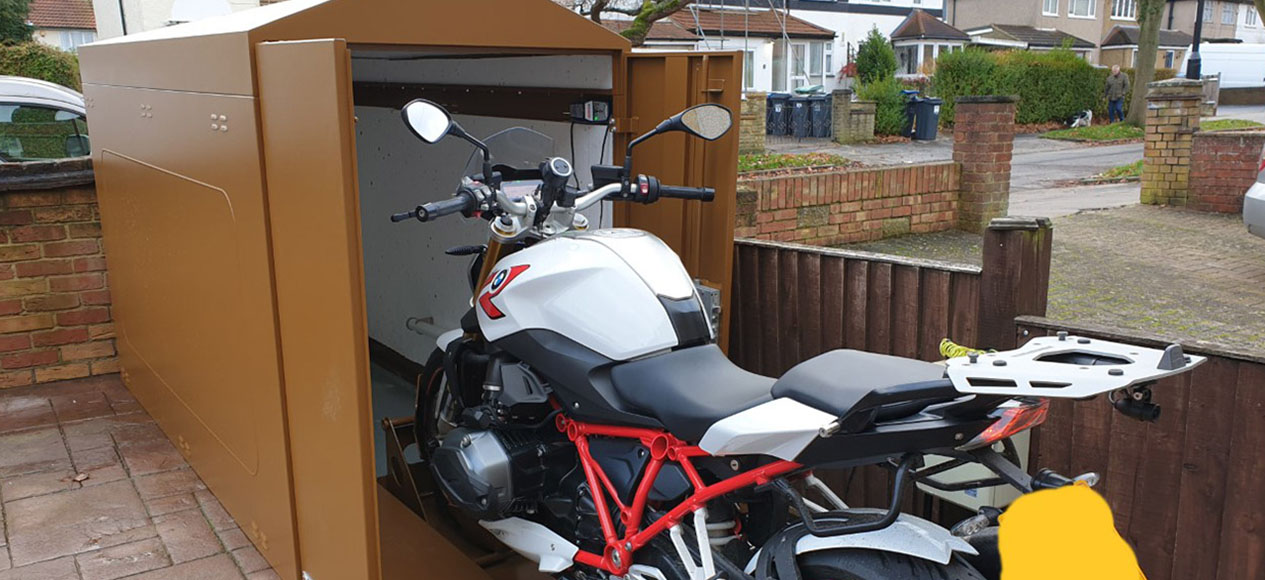
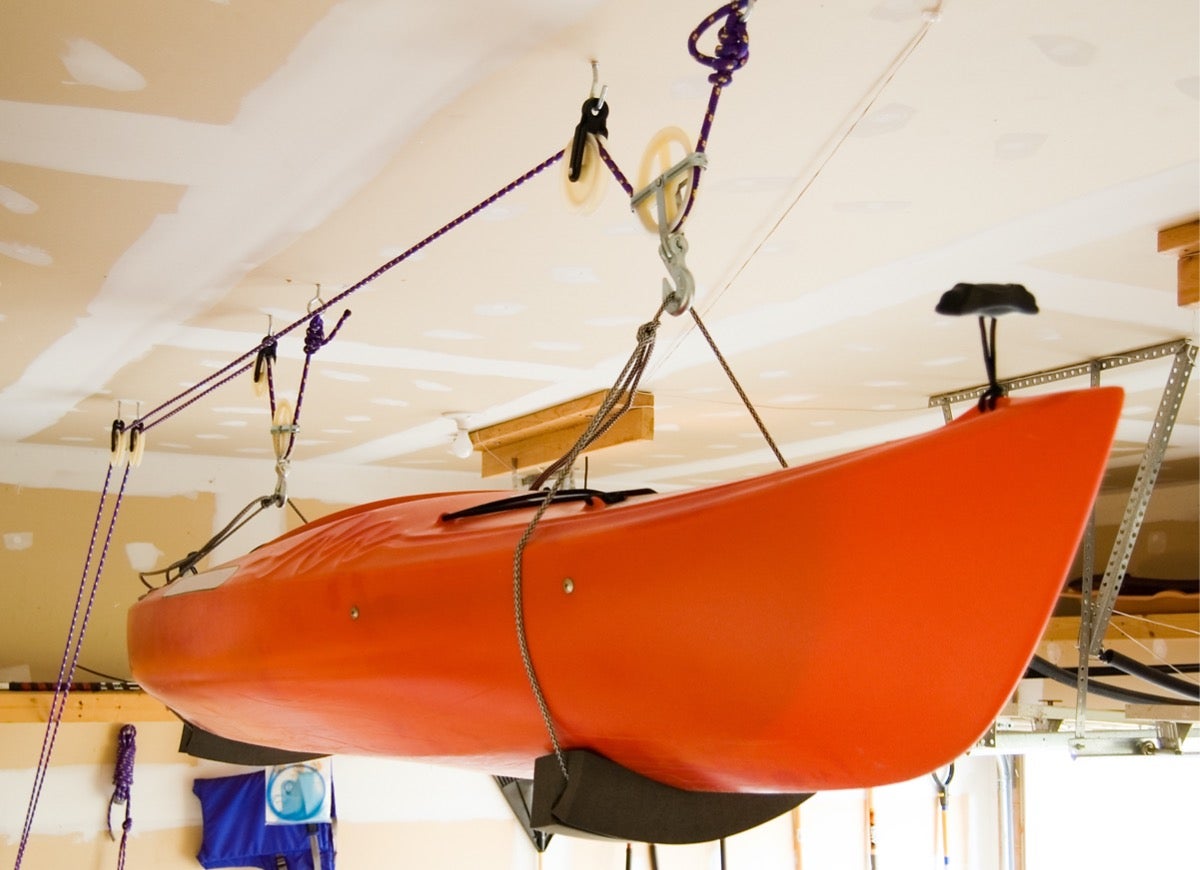
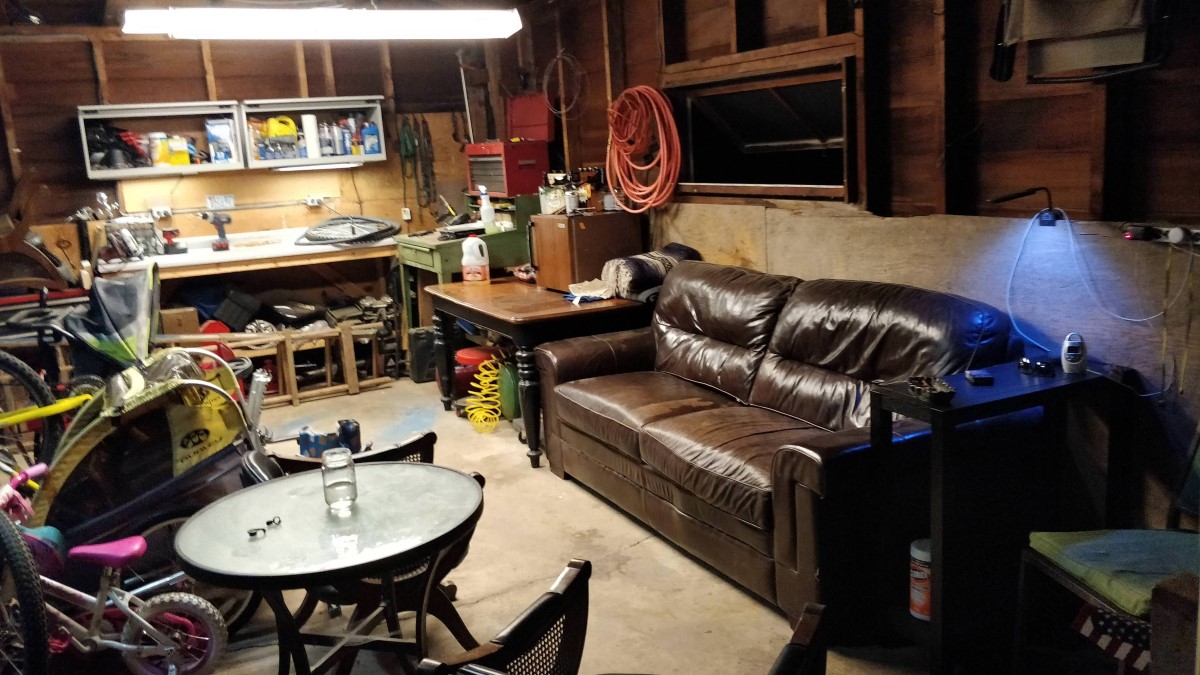
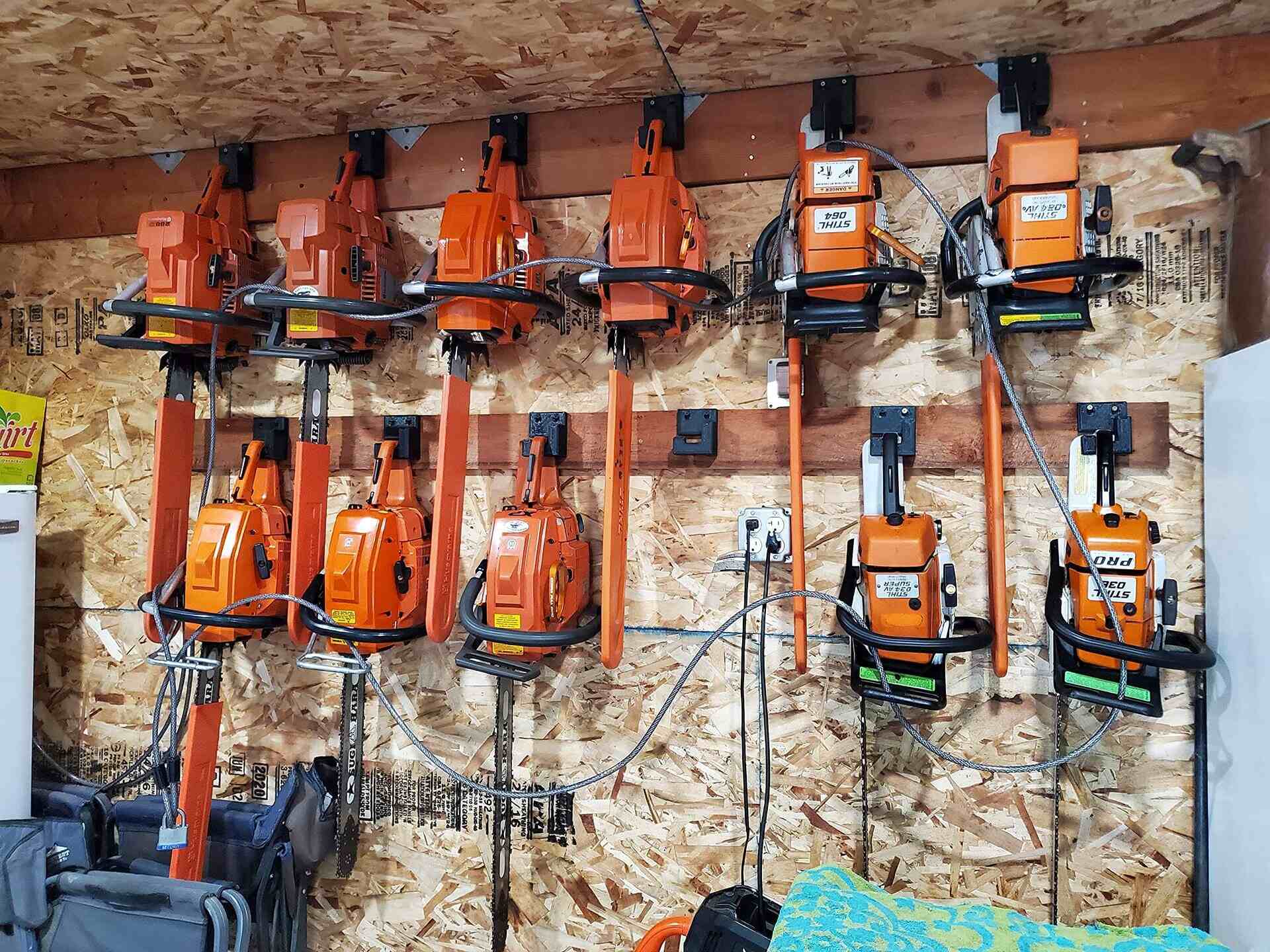

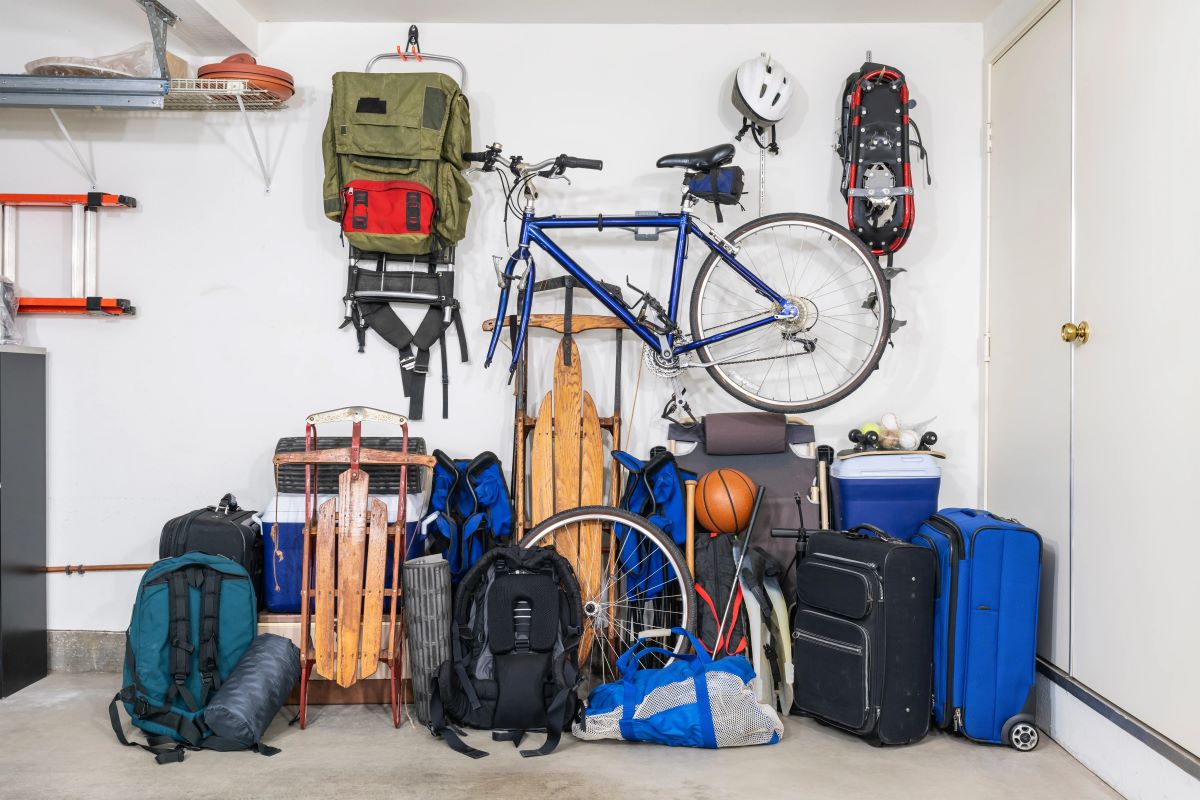
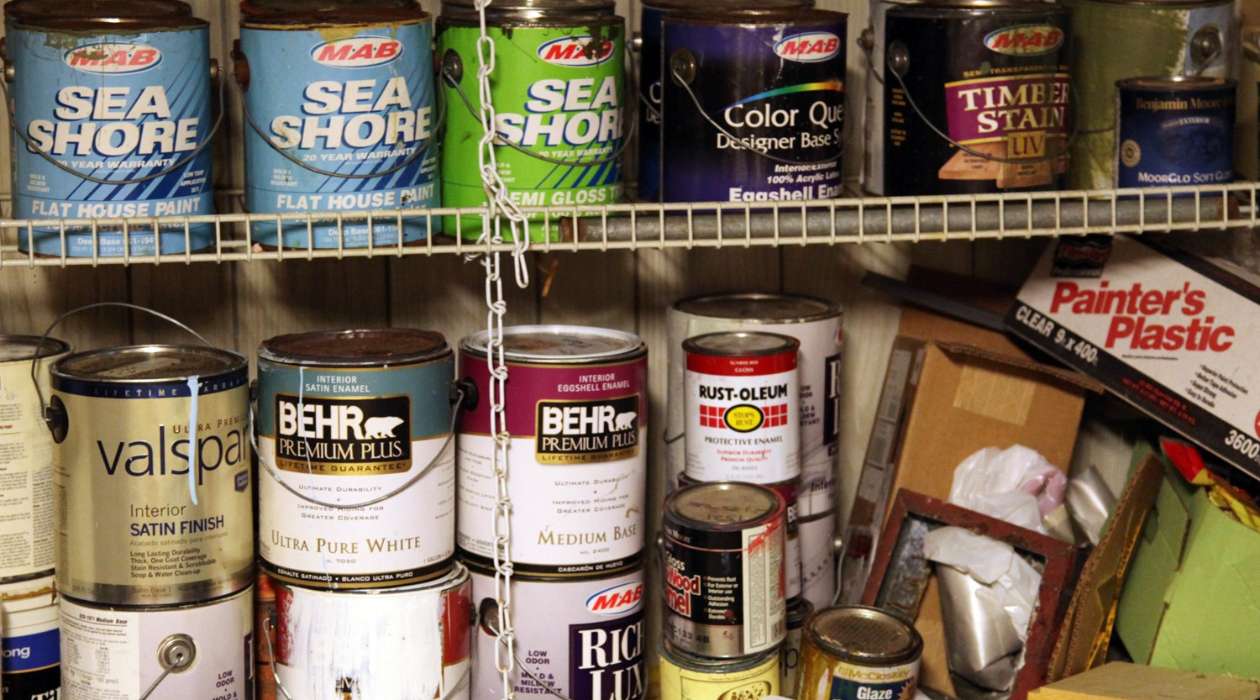
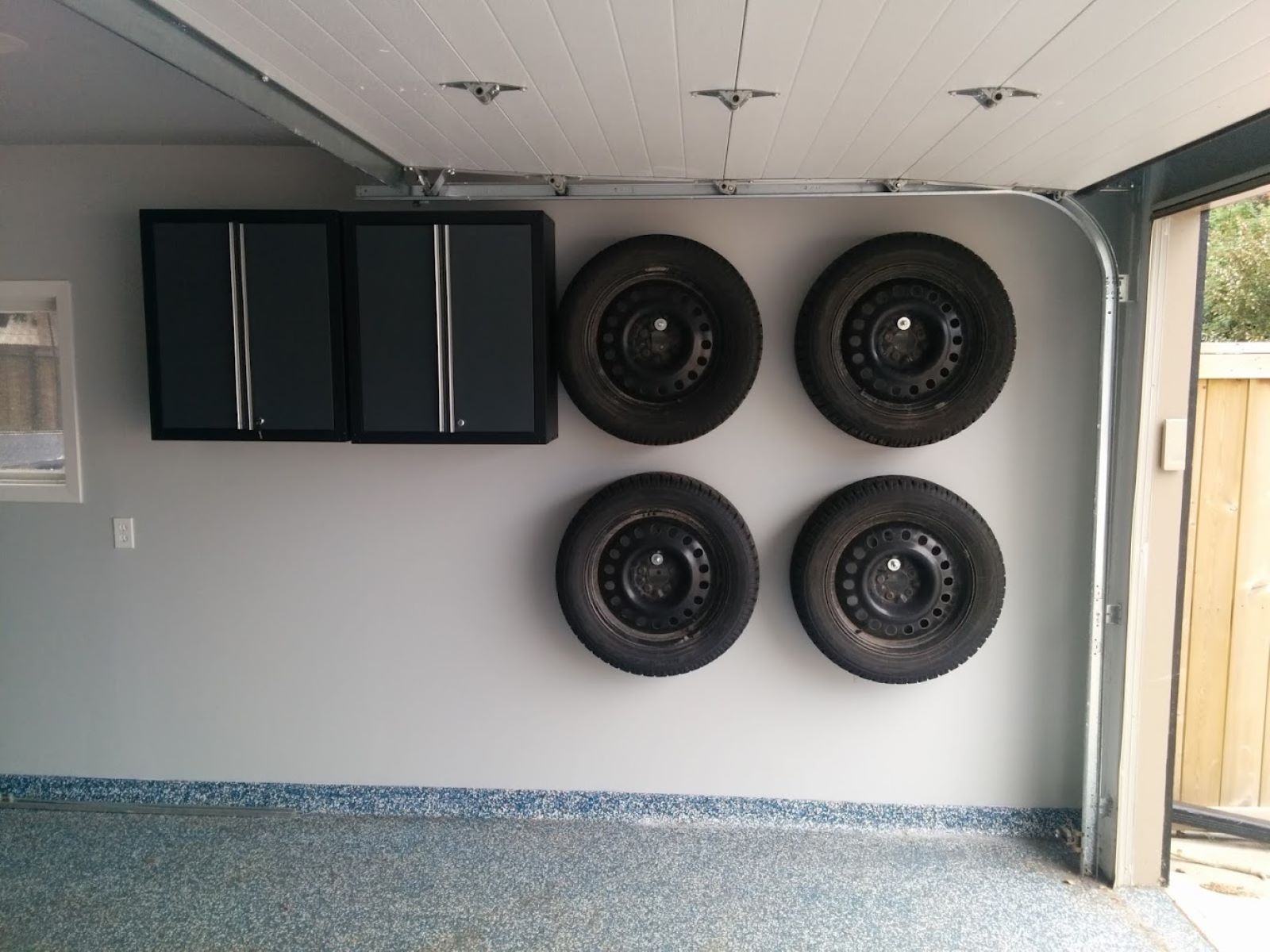
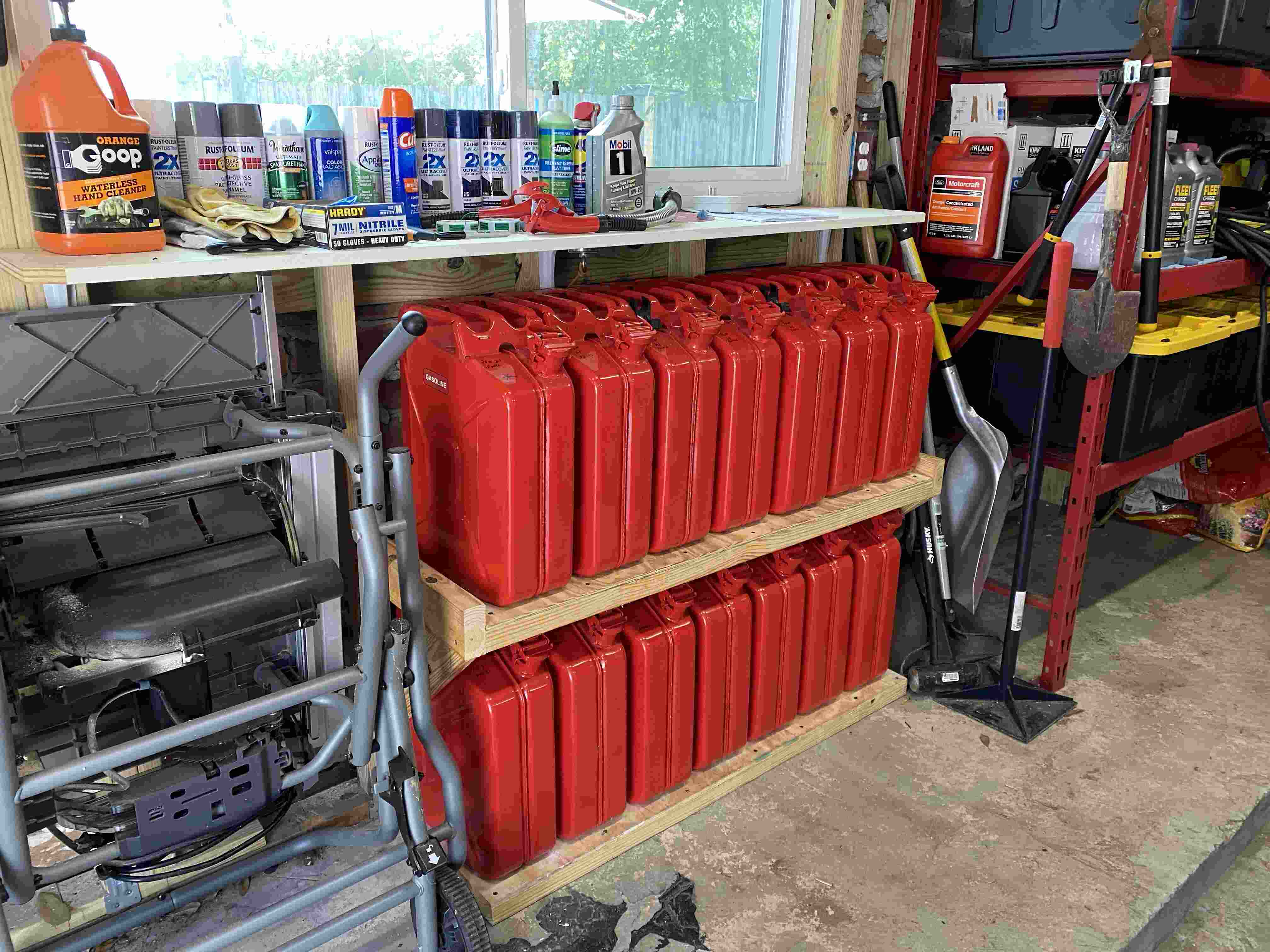
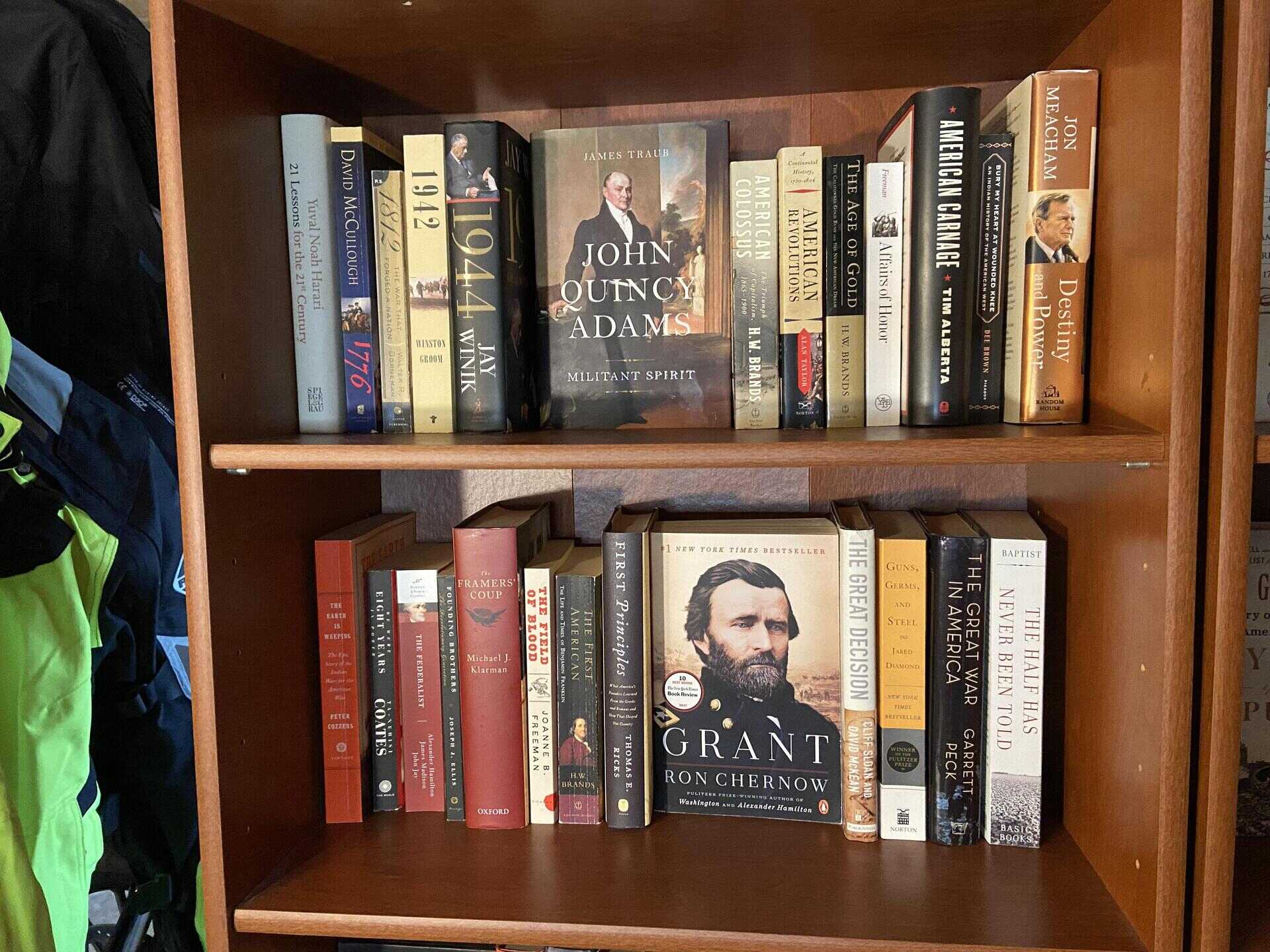
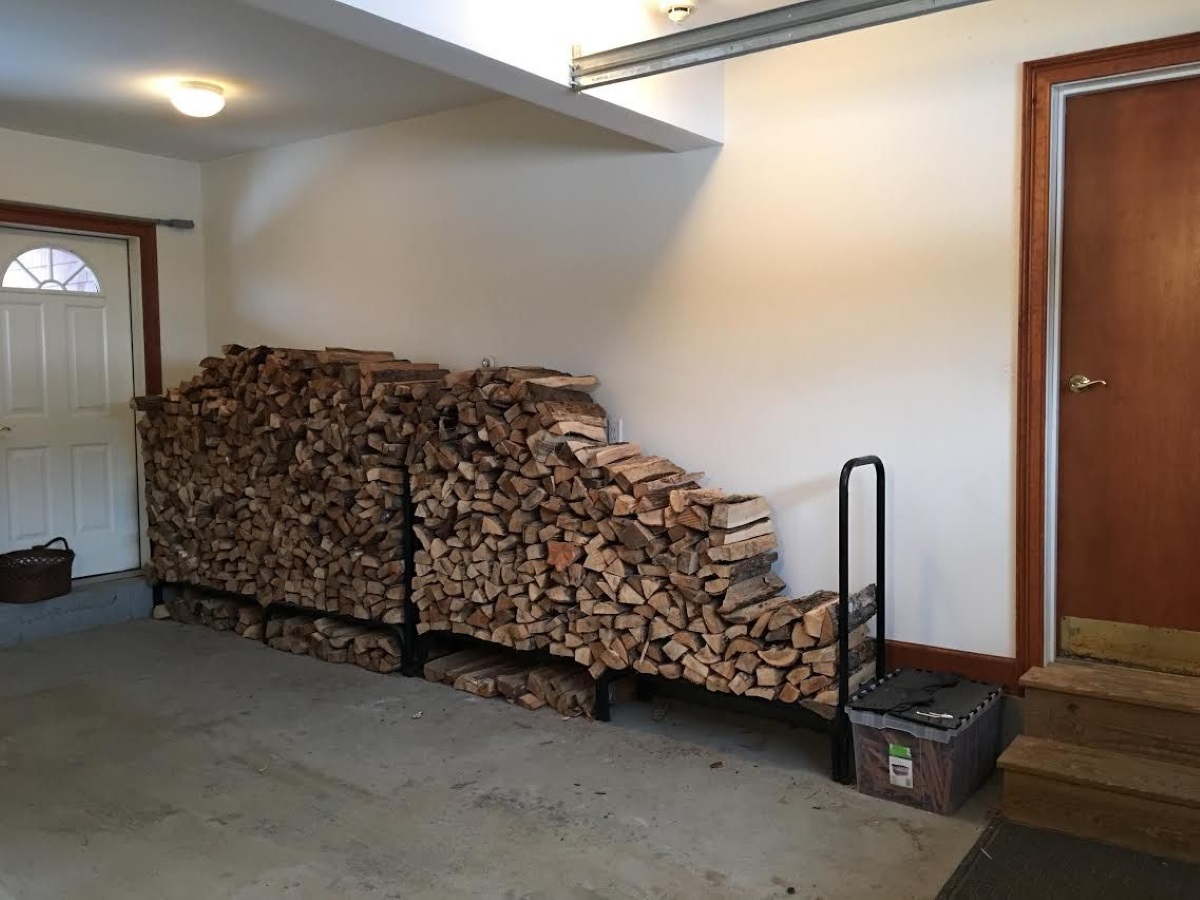
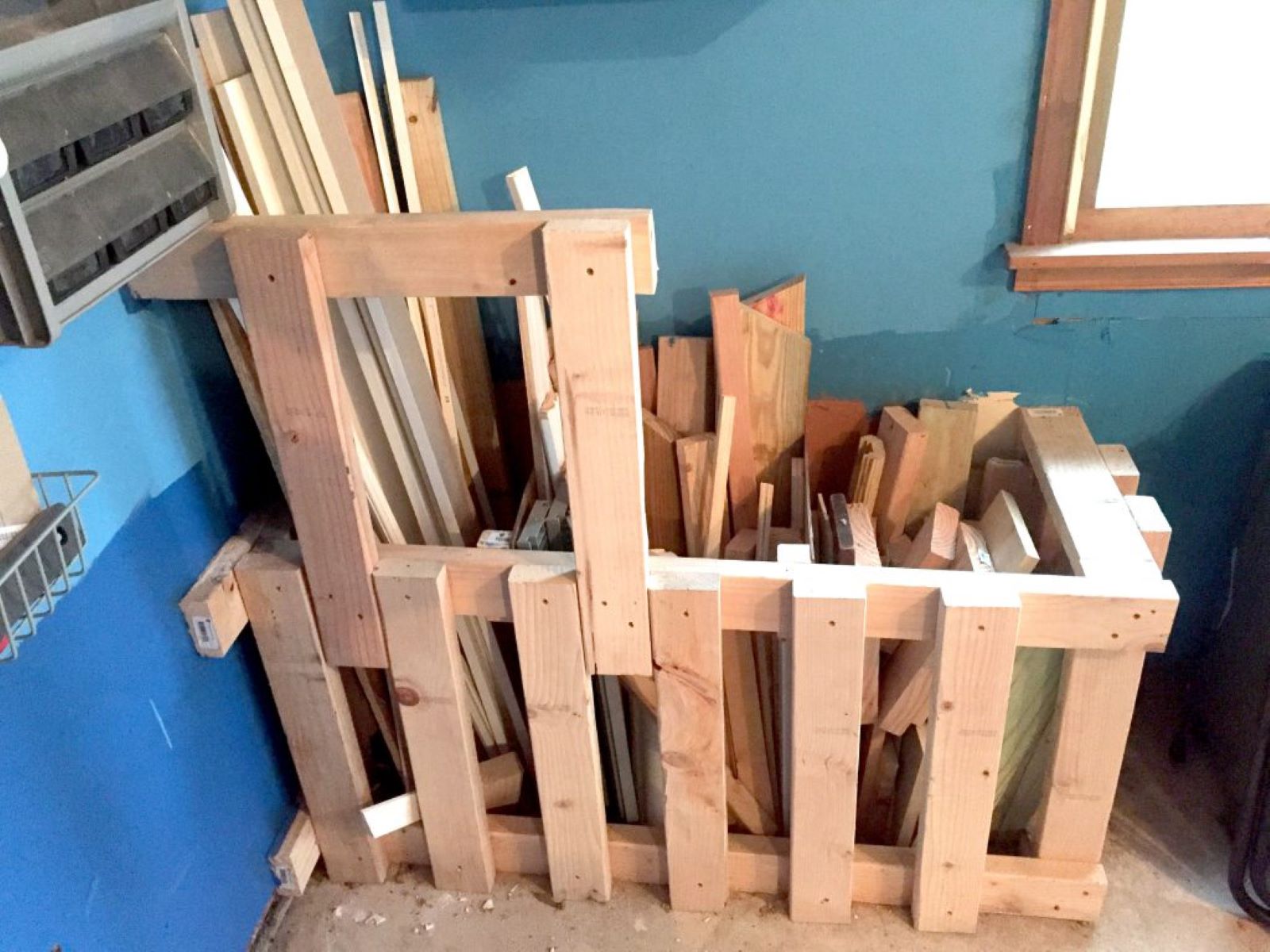

0 thoughts on “How To Store Strollers In The Garage”